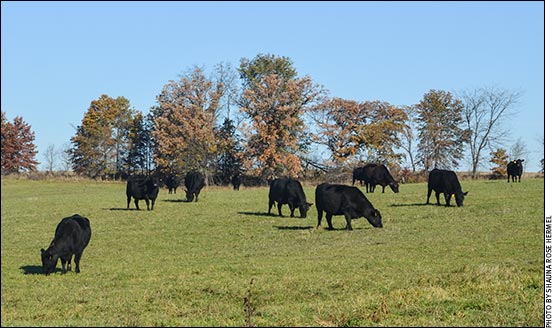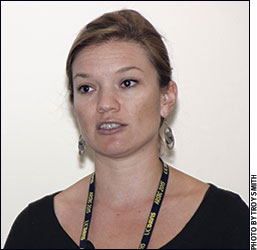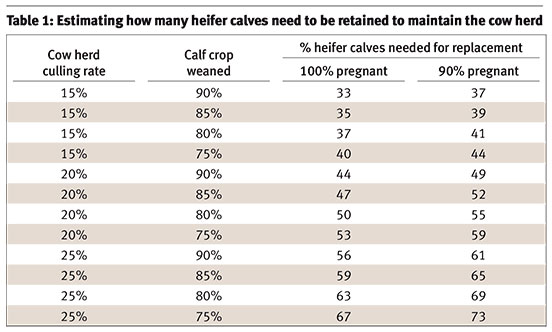
Prebreeding Strategies for Females
Selection suggestions offered to maximize breeding success.
To ensure successful breeding, attention to detail must be paid to genetic selection, fetal programming, heifer development and heifer selection, said Catalina Cabrera, staff veterinarian with the University of California–Davis College of Veterinary Medicine. She spoke to attendees of the 2015 Applied Reproductive Strategies in Beef Cattle (ARSBC) symposium this August.

Needing fewer replacement females allows use of more selective criteria, said Catalina Cabrera, staff veterinarian with the University of California–Davis College of Veterinary Medicine.
She explained that cow herd culling, calf crop weaned and pregnancy rates all contribute to the necessary percentage of replacement heifers cow-calf producers will need each year. With a 15% herd culling rate, 90% calf crop weaned and 90% pregnancy rate, 37% of the herd’s heifers would be needed as replacements. However, with a 25% herd culling rate, 80% calf crop weaned and 90% pregnancy rate, 69% of the herd’s heifers would be needed as replacements (see Table 1). Needing fewer replacement females allows producers to be more selective and raise the bar on selection criteria.
At weaning, Cabrera suggests keeping 10% more females than necessary. Select heifers from older cows with a good udder and those with balanced phenotypic traits, she advised. Sell daughters of poor-producing cows; females with light weaning weights, large birth weights and large frames; late-born females; and those who have received growth-promoting implants.
At prebreeding, she said, select females more harshly. Check for target weight at 55%-65% of the mature body weight; a body condition score of 5 or 6; and those females that perform well with a reproductive tract score (RTS), ovarian ultrasound or pelvic measurement.
Cabrera shared data of pregnancy rates via artificial insemination (AI) and natural service in females with varying RTS. Females with RTS 1 and 2 had a 40.7% pregnancy rate with AI and 81.2% with natural service. Females with RTS 5 posted a pregnancy rate of 64.6% with AI and 95.2% with natural service.

Additionally, prebreeding ultrasound is a good indicator of a female’s fertility because antral follicle count is greater in heifers that get pregnant in the first 21 days.
To ensure heifer reproductive success, breed heifers two weeks before cows so heifers can catch up with the cows postpartum, Cabrera advised. Because they are still growing themselves in addition to developing their fetus, this gives them more chance of success in rebreeding, Cabrera explained. Avoid giving open cows a free ride and pregnancy-check by palpation, ultrasound or blood tests.
Selection for successful reproduction hinges on healthy females. Cabrera recommended prevention through quarantine, vaccination and a strong biosecurity plan, in addition to quick diagnostics, treatment and constant monitoring of females.
For vaccinations, Cabrera highlighted the pros and cons of killed vaccines and modified-live virus (MLV) vaccines.
Killed vaccines mean the disease agent is killed and cannot replicate in the host animal. They require an adjuvant to produce a strong immune response, she said. Their advantages are that they will not become virulent and cause disease, but the adjuvant may cause adverse effects and have shorter-lived immunity.
MLV vaccines are attenuated, and the disease agent replicates and creates an immune response in the host animal. There are fewer adverse reactions when used properly, and the immunity is longer-lived than killed vaccines. However, do not give an MLV vaccine to a pregnant animal unless it was properly vaccinated with that vaccine prebreeding.
Cabrera spoke during Monday’s ARSBC session focused on females. Visit the Newsroom at www.appliedreprostrategies.com to view her PowerPoint, read the proceedings or listen to her presentation.

Editor’s Note: Comprehensive coverage of the symposium is available online at www.appliedreprostrategies.com. Compiled by the Angus Journal editorial team, the site is made possible through sponsorship by the Beef Reproduction Task Force.





